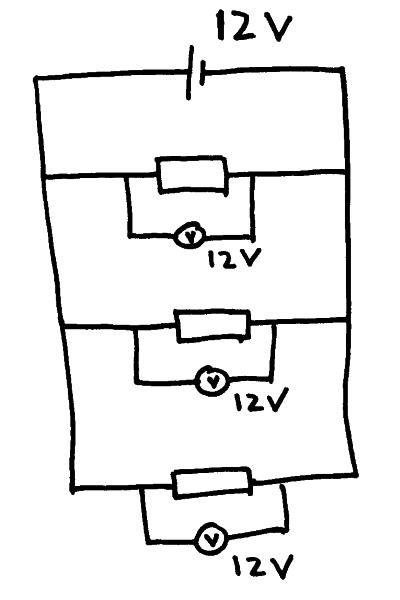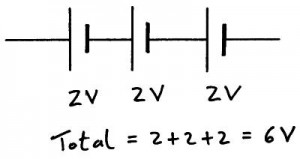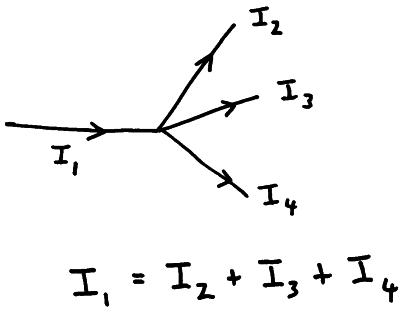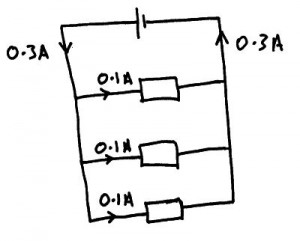Cells in series and in parallel
Cells in Series
When cells are connected in series with each other and they are all connected in the same direction the total potential difference supplied to the circuit is the individual potential differences added together.
Vtotal = V1 + V2 + V3
Identical cells in parallel with each other
When identical cells are in parallel with each other the total potential difference supplied to the circuit is equal to the potential difference of just one of the cells.
Vtotal = V1 = V2 = V3
So if three 2V cells are connected in parallel with each other the potential difference supplied to the circuit is 2V.
Resistors in series and in parallel
Resistors in Series
When resistors are in series with each other there total resistance is just there individual resistance added together.

Resistors in parallel
When resistors are in parallel with each other there total resistance is found using the equation below.


Current in series and parallel circuits
Conservation of charge – ” the total charge flowing into a junction of wires must equal the total charge flowing out of the junction”.
Kirchoff’s first law – “the sum of the currents flowing into a junction of wires must equal the sum of the currents flowing away from the junction of wires”.
Current in series circuits.
When you put an ammeter into a series circuit the current is the same wherever you put the ammeter.
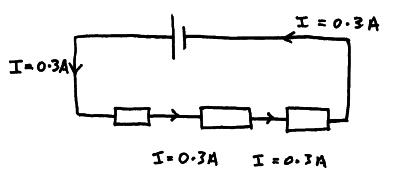
Current in parallel circuits.
The total current flowing from the cell towards the branches in the circuit must always equal the current flowing through each component in the branches of the circuit when they are added together.
If the components have different resistances then the current through each component may be different but it when you add them together they must add up to the total amount of current leaving the cell.
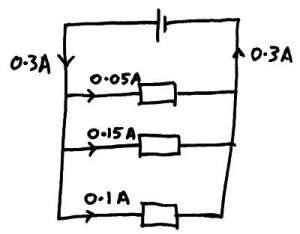
Potential difference in series and parallel circuits
Kirchoffs second law – ” the sum of the Emf’s in any closed loop in a circuit must be equal to the sum of the potential differences in the closed loop in the circuit”.
Potential difference in a series circuit.
The total potential difference supplied by the cell is divided up between the components. If the components all have the same resistance they will have equal amounts of potential difference across them.
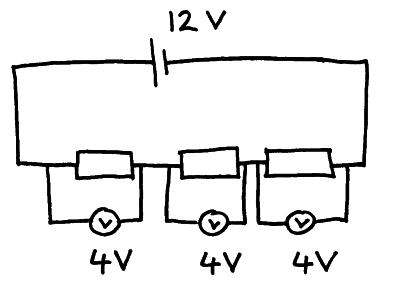
If the resistance are not equal they may have different amounts of potential difference across them but when added up they must always equal the p.d. supplied by the cell.

Potential difference in parallel circuits.
The potential difference supplied by the cell is the same potential difference as that across each component in the parallel circuit.
